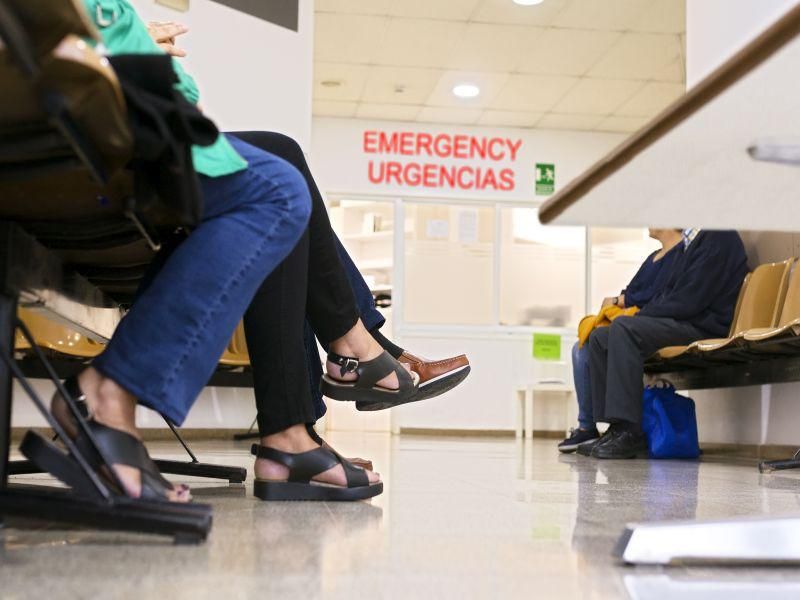TUESDAY, April 6, 2021 (HealthDay News) — U.S. children commonly wait hours in the emergency room for help with a mental health crisis — a problem that has worsened over time, a new study finds.
Researchers found that between 2005 and 2015, prolonged ER stays became ever more common for children and teenagers in need of mental health help. By 2015, nearly one-quarter of kids were in the ER for at least six hours — up from 16% a decade prior.
Experts said the situation likely reflects a longstanding and worsening problem: The U.S. has far too few mental health providers for children.
“The demand is crushing the supply,” said Dr. Ken Duckworth, chief medical officer for the nonprofit National Alliance on Mental Illness in Arlington, Va.
Duckworth, who was not involved in the study, called the findings important, and said they substantiate the “crisis” the nation faces in its mental health workforce.
And the dearth of providers goes beyond rural areas and inner cities, where all types of medical care can be in short supply.
“It’s a widespread problem,” said Dr. Jennifer Hoffmann, one of the researchers on the study and an ER doctor at Lurie Children’s Hospital of Chicago.
Hoffmann said that while the study period went to 2015, the COVID-19 pandemic has only increased the demand for pediatric mental health services. At her hospital, the percentage of ER visits for mental health conditions has doubled since the start of the pandemic.
Kids in mental health crisis can end up in the ER for various reasons, Hoffmann said. Sometimes they are suicidal or have intentionally harmed themselves. Sometimes they are having a panic attack or a serious behavioral issue. Sometimes they or their parents have nowhere else to turn for mental health help.
Prolonged ER visits — surpassing 12 hours in some cases — are closely linked to provider supply, both Hoffmann and Duckworth said.
Studies show that only about 10% of that time is dedicated to actual medical evaluation, Hoffmann said. Most of the ER stay is about finding a child appropriate follow-up care — either a bed if a hospital admission is necessary, or an outpatient mental health appointment.
“It can take two weeks to get an appointment, which is just not practical for these children,” Hoffmann said.
When no prompt appointment with a specialist can be found, she noted, primary care providers have been filling the void.
The findings — published April 5 in the journal Pediatrics — are based on information from a U.S. federal survey that tracks ER visits nationwide. Researchers analyzed nearly 150 million visits by children ages 6 to 17 between 2005 and 2015. More than 7 million were for mental health reasons.
Throughout that period, ER visits were longer for children with mental health needs than for kids with strictly physical diagnoses. Meanwhile, prolonged stays for mental health conditions grew increasingly common, while there was no such change for physical conditions.
By 2015, almost 13% of ER stays for mental health dragged on for 12 hours or more. That was up from 5% in 2005.
Hispanic children were especially vulnerable to those marathon stays — with triple the risk facing white children.
It’s not clear why, Hoffmann said, but some familiar obstacles could be at work. Hispanic families may live in areas that are especially lacking in mental health services, while language barriers may make it difficult to find a provider.
The researchers found no link between the type of insurance a family had — private or Medicaid — and the length of ER stay.
Child mental health care is expensive, and “suboptimal” reimbursement for those services is part of the problem, according to the researchers.
Medicaid, the government program for low-income Americans, covers mental health care. But the specifics vary from state to state, Hoffmann noted.
Getting basic care to kids before they are in crisis is critical. Hoffmann said that expanding insurance coverage of “telehealth” services could help — as could greater investment in school-based mental health services.
But the central issue, Duckworth said, is that the professional workforce must be expanded. That includes not only child psychiatrists — whose education and training take 12 years, he noted — but also nurse practitioners, social workers and other providers trained in mental health care.
Parents who are concerned about their child’s mental health can consult their pediatrician, Hoffmann said.
She also encouraged them to “talk openly” with their kids, to assure them they have somewhere to turn.
In general, Hoffmann noted, kids tend to do better when they have limits on screen time, and get enough sleep and physical activity.
More information
The National Alliance on Mental Illness has more on teen mental health.
SOURCES: Jennifer Hoffmann, MD, pediatric emergency physician, Ann & Robert H. Lurie Children’s Hospital of Chicago, and assistant professor, pediatrics, Northwestern University Feinberg School of Medicine, Chicago; Ken Duckworth, MD, chief medical officer, National Alliance on Mental Illness, Arlington, Va.; Pediatrics , April 5, 2021, online
Copyright © 2025 HealthDay. All rights reserved.

